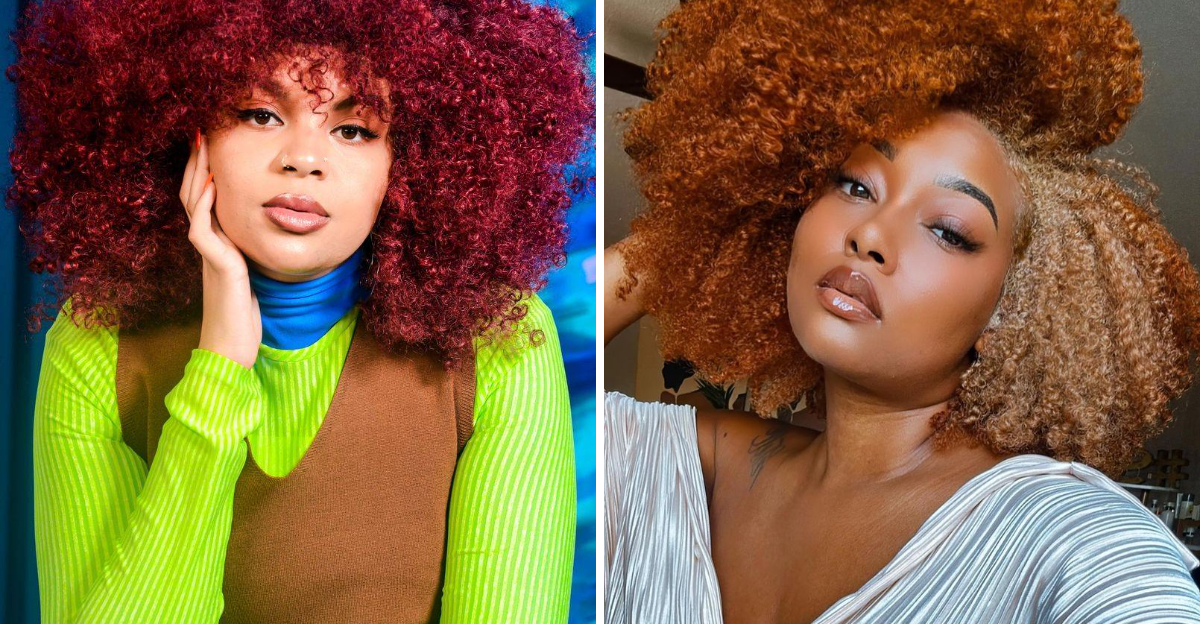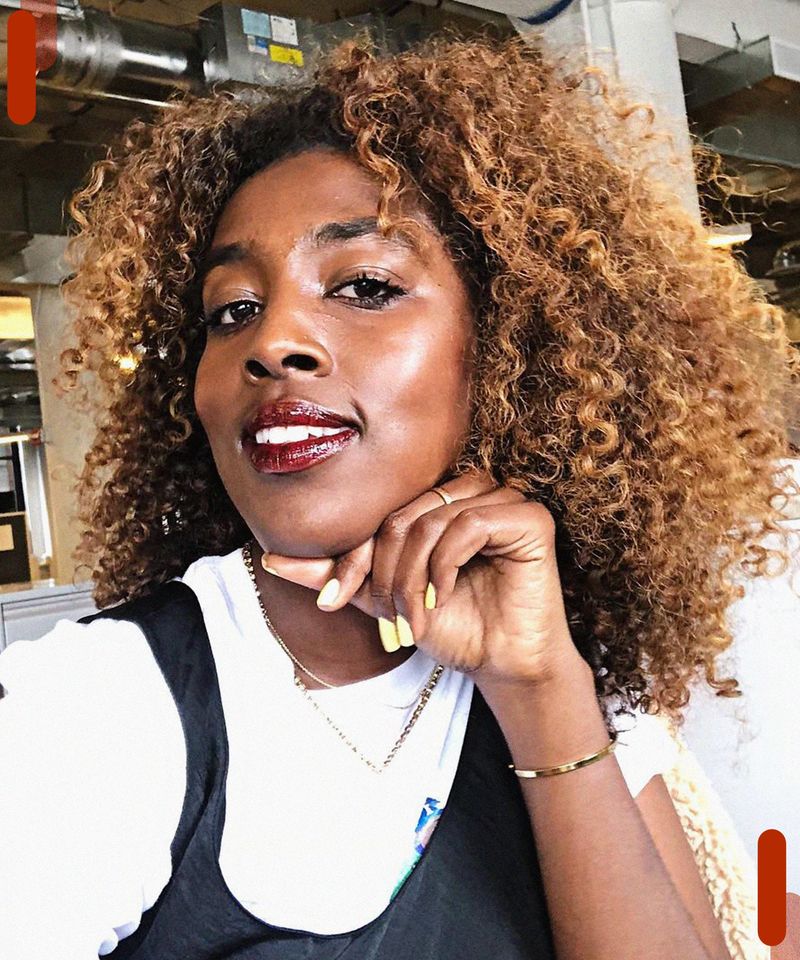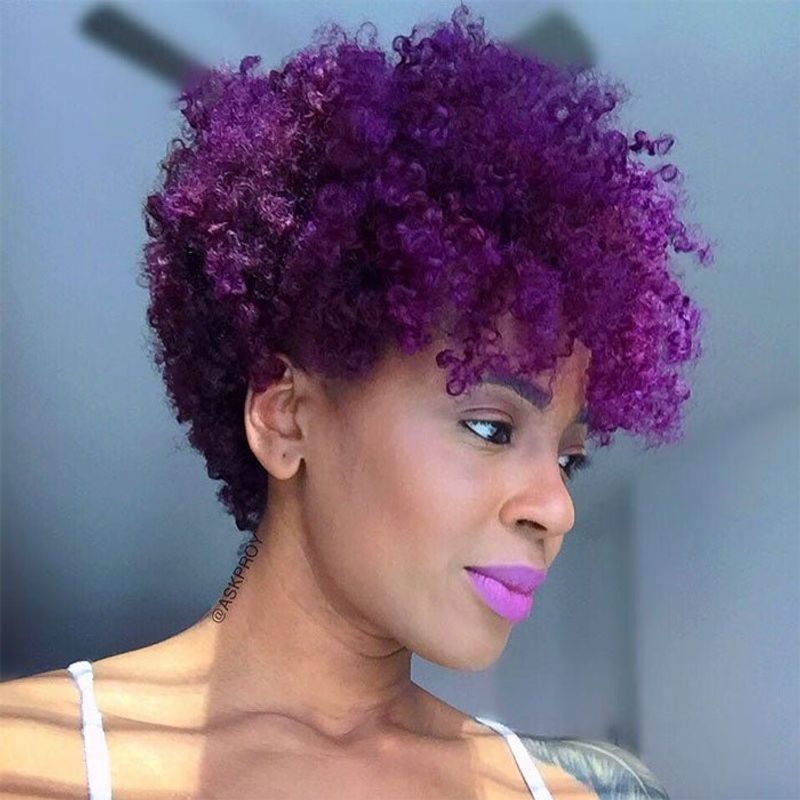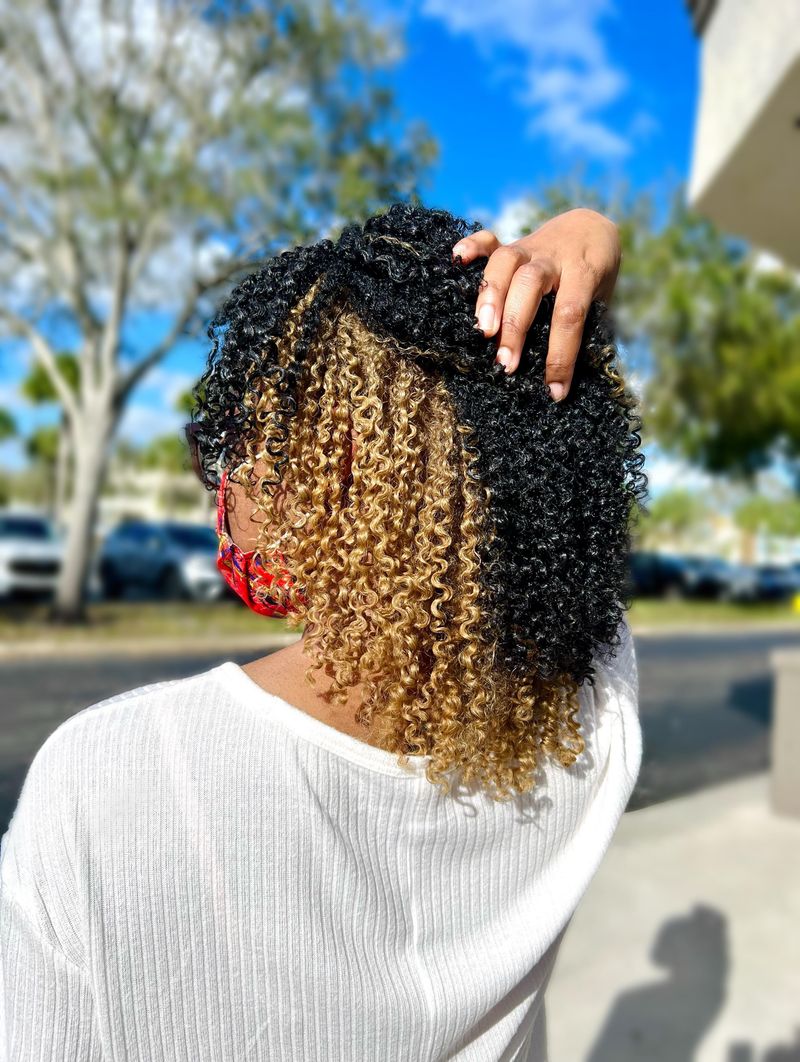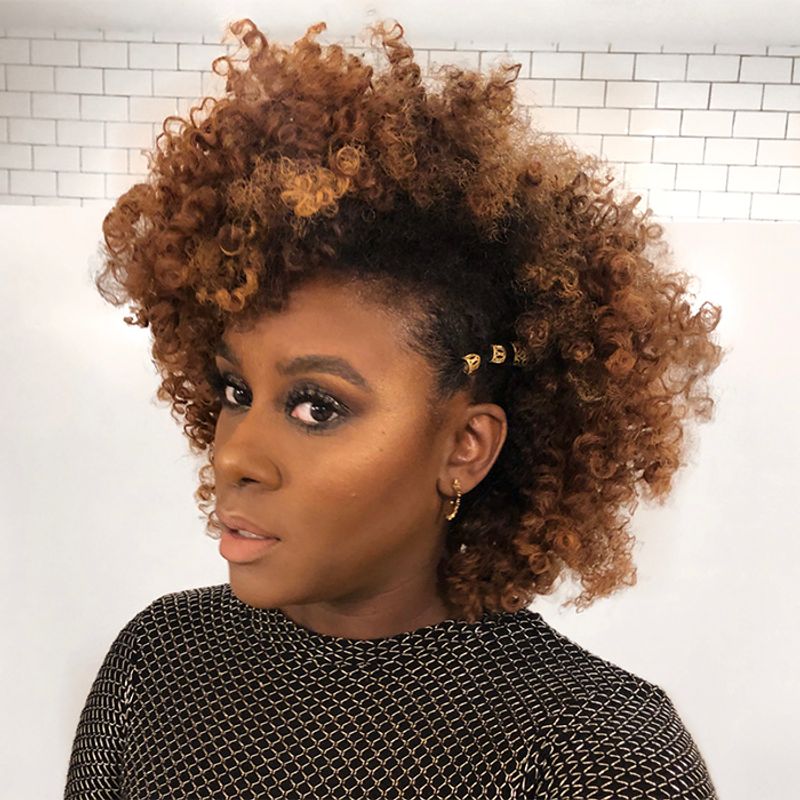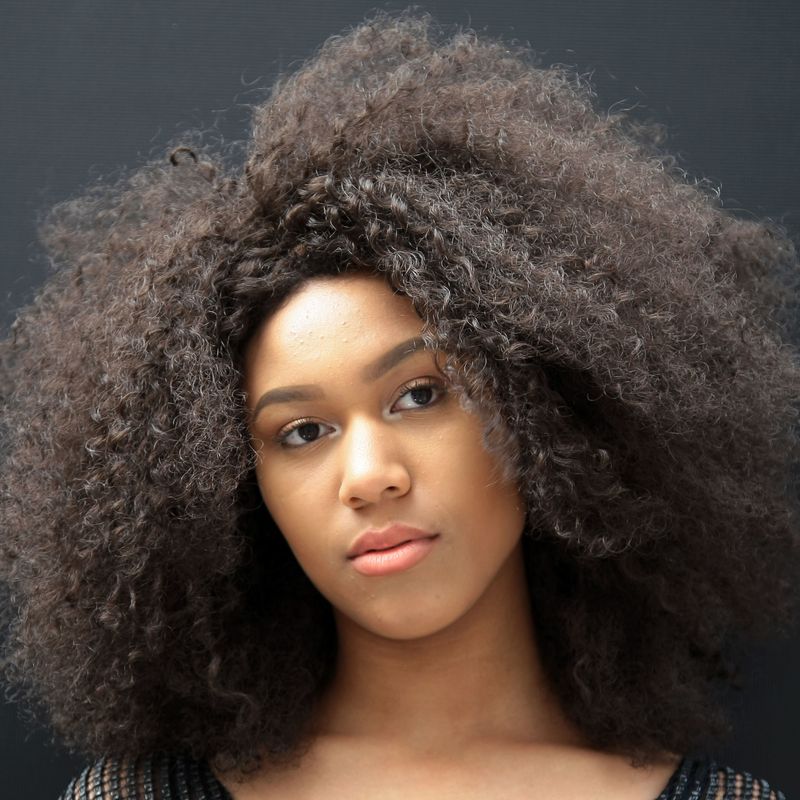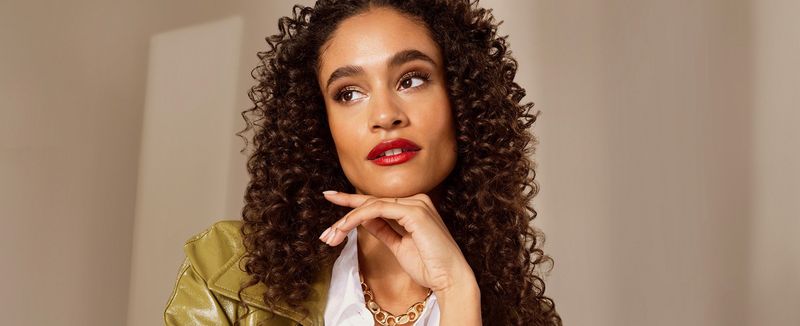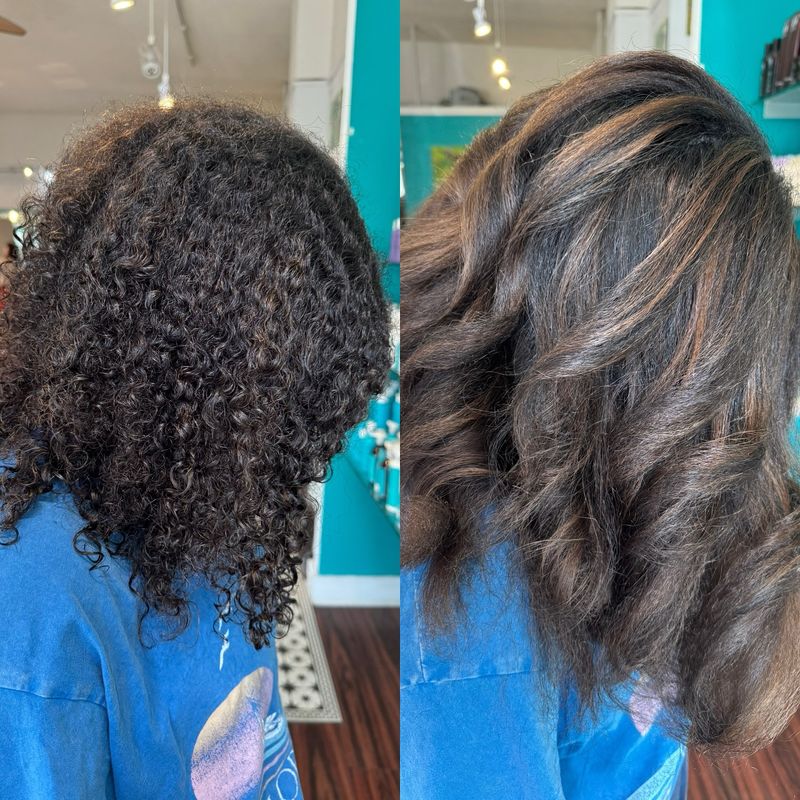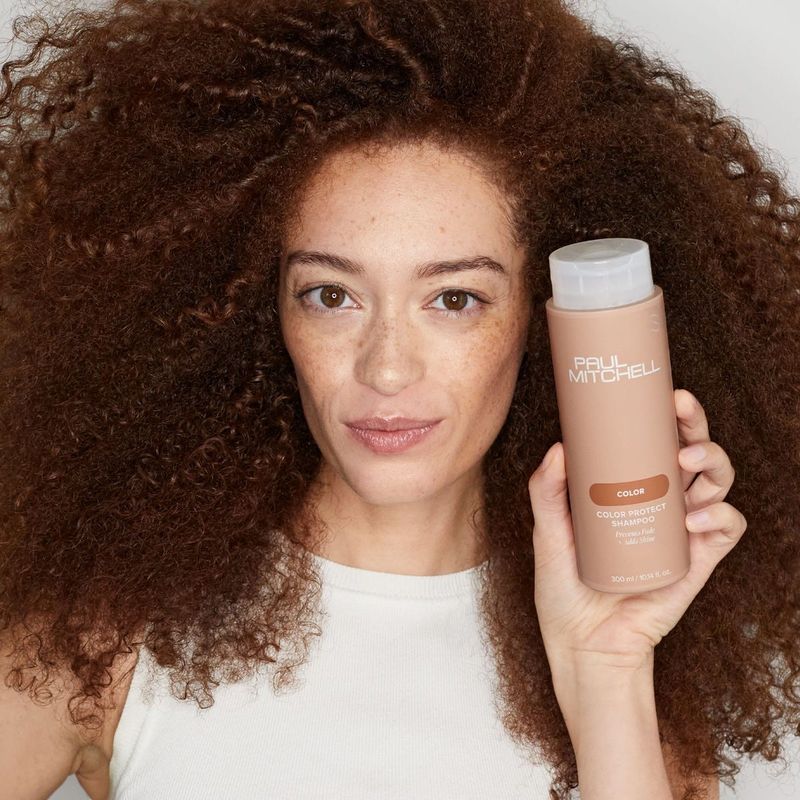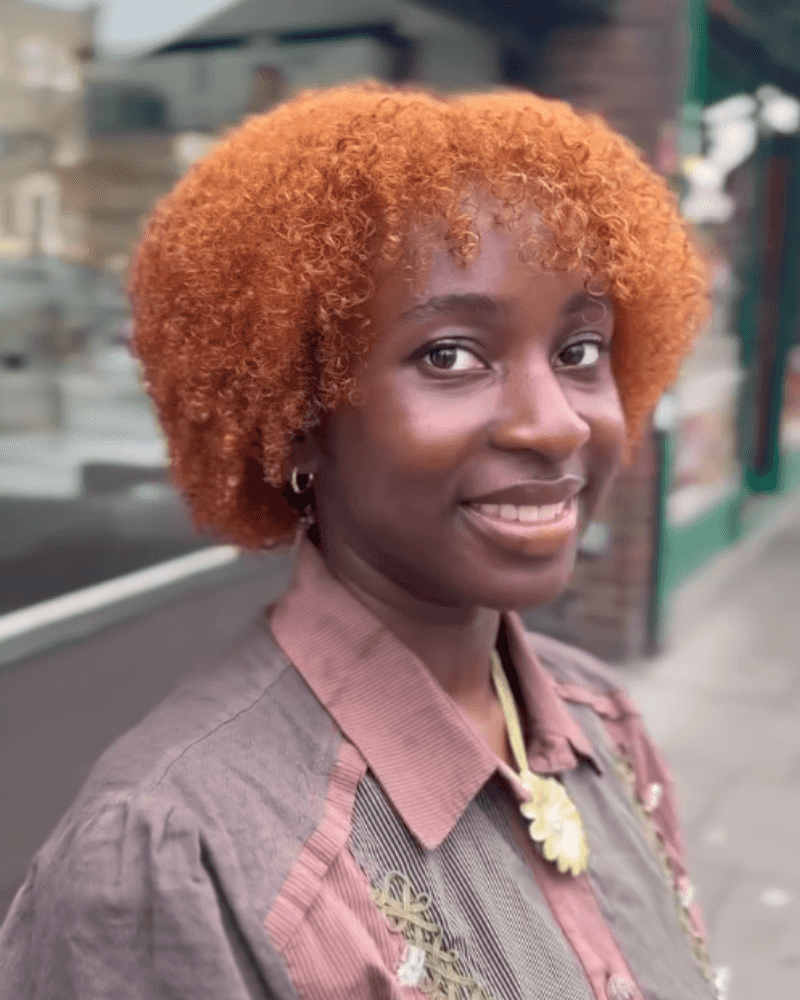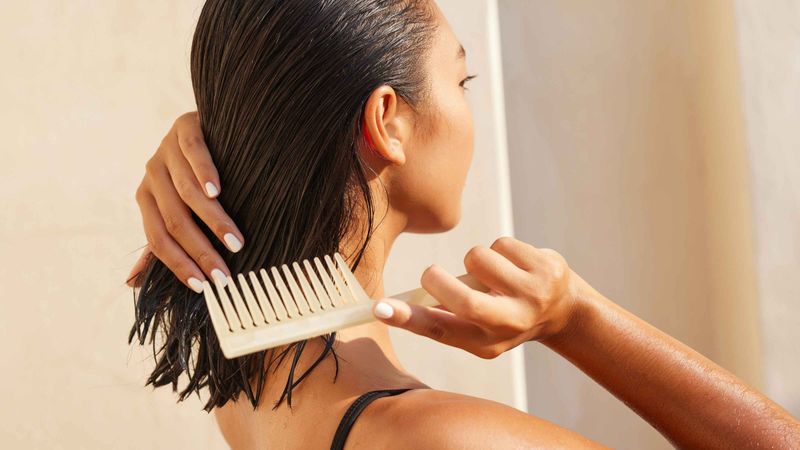Coloring Afro-textured hair requires special care and knowledge. The unique structure of your curls means that color treatments affect them differently than straight hair. Before you take the plunge into a new hair color, arm yourself with these essential tips to protect your beautiful locks and get the best results possible.
1. Find a specialist who understands your hair type
Not all colorists have experience with Afro-textured hair. Search for stylists who showcase diverse clients in their portfolio and specifically mention expertise with textured hair. Your curls deserve specialized care!
2. Schedule a consultation first
Before committing to color, book a face-to-face consultation. This gives you time to discuss your goals, examine the stylist’s previous work, and determine if they truly understand how to treat your unique hair texture.
Related: -15 Head-Turning Crochet Hairstyles For Black Women In 2025
3. Bring inspiration photos of similar hair types
Screenshots of influencers with your hair texture sporting your desired color are invaluable. Photos of straight-haired models won’t translate the same way on your beautiful coils and curls.
4. Know your hair’s history
Previous chemical treatments affect how color develops. Be upfront about relaxers, texturizers, or previous dye jobs. Hair memory is real, and your stylist needs this information to avoid damaging reactions.
5. Understand porosity matters
High-porosity Afro hair absorbs color quickly but may fade faster. Low-porosity hair resists color penetration. Testing your porosity beforehand helps your colorist formulate the perfect approach for lasting results.
6. Prepare for a strand test
Insist on a strand test before your full color service. This small test on a hidden section reveals how your specific hair reacts to the color formula, preventing unwelcome surprises.
7. Budget for multiple sessions
Major color changes often require several appointments, especially for darker hair going lighter. Rushing the process damages your precious strands. Patience yields healthier, more vibrant results worth waiting for.
8. Deep condition before your appointment
Strengthen your strands with intensive moisture treatments in the weeks leading up to coloring. Well-hydrated hair accepts color more evenly and resists breakage from the chemical processing.
9. Skip heat styling beforehand
Heat-damaged hair absorbs color unpredictably. Give your tresses a styling break for at least two weeks before coloring. Your natural texture should be in its healthiest state possible.
10. Consider semi-permanent options first
Demi or semi-permanent colors are gentler introductions to hair coloring. They gradually fade without harsh demarcation lines, making them perfect for first-timers or those concerned about damage.
11. Understand realistic color goals
Afro-textured hair often requires more processing to achieve dramatic color changes. Be realistic about what’s possible in one session. Platinum blonde typically demands multiple appointments to maintain hair health.
12. Plan for a longer appointment
Color services for textured hair typically take longer than for straight hair. Block off at least 3-4 hours, especially for first-time treatments. Rushing compromises results and potentially damages your hair.
13. Invest in color-safe products
Regular shampoos strip color quickly from textured hair. Budget for sulfate-free, color-preserving products specifically formulated for your hair type. Quality maintenance extends your color investment significantly.
14. Schedule post-color protein treatments
Color processing weakens hair’s protein structure. Balance moisture and protein afterward with specialized treatments. This rebuilds strength while maintaining your coils’ natural elasticity and definition.
15. Protect your color from the sun
UV rays fade color faster on textured hair. Wear hats or use products with UV protection when outdoors. Colored Afro hair is particularly vulnerable to environmental damage that dulls your vibrant hue.
16. Adjust your washing schedule
Over-washing strips color rapidly from textured hair. Extend time between shampoos and consider co-washing instead. When you do shampoo, use cool water to seal the cuticle and preserve your color.
17. Prepare for different styling techniques
Colored hair often has a different texture than your natural hair. Some curls may loosen or tighten after processing. Ask your stylist to demonstrate styling techniques suited for your new texture.
18. Plan regular touch-up appointments
New growth is more visible with dramatic color changes. Schedule maintenance appointments every 6-8 weeks. Consistent upkeep prevents the need for harsh processing on your entire head each time.
19. Consider your lifestyle commitments
Vibrant colors require significant maintenance. Be honest about your willingness to follow special care routines. Lower-maintenance options like balayage or ombré grow out more gracefully with less upkeep.
20. Discuss emergency care procedures
Ask your colorist what to do if your hair feels damaged afterward. Having a post-color rescue plan prevents panic reactions that could worsen problems. Professional advice beats DIY solutions every time.

